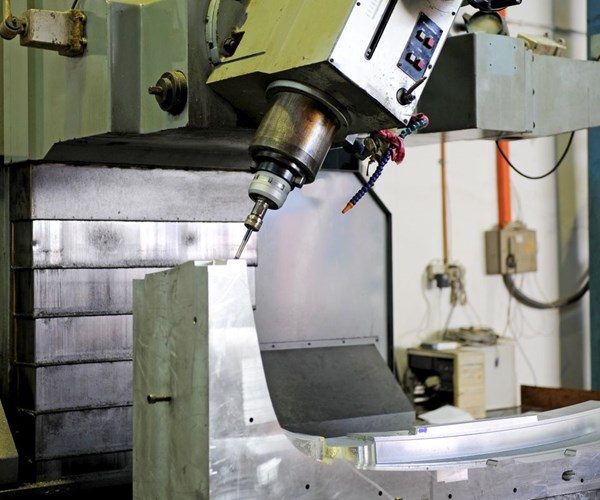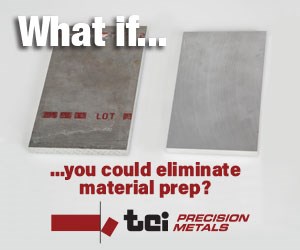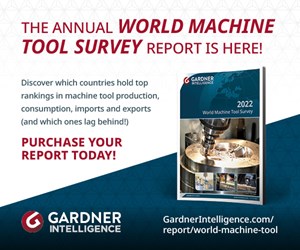Buying a VMC: Considering Structure and Stability
Design and construction govern a vertical machining center’s ability to machine parts to tight tolerances with accuracy and repeatability.
Share






Whether it’s for a toolroom, a job shop or a production house, there are a lot of factors to consider when it comes to acquiring a vertical machining center (VMC). Key preliminary considerations include the intended application and workpiece(s) and the needs of a shop’s various departments. And then there’s the research and data-gathering process.
Among the numerous machine tool characteristics to scrutinize before buying a VMC are machine structure and stability.
Accuracy and Repeatability
The ability to machine parts to a tight tolerance and to do so time after time must be considered. That is where a machine’s design and construction come into play. Its ability to achieve the required precision and accuracy, and the number of parts to be machined, will influence the quality of machine that’s needed and the price it will demand. The higher the accuracy and the larger the quantity of parts to be produced, the higher the price tag the buyer can expect.
Because of the characteristics of a C-frame design, a VMC’s thermal stability can be a challenge. Just as a sturdy house requires a solid foundation, the same is true for a stable machine tool. Most superior VMC structures are engineered using finite element analysis (FEA) software. It’s not simply the weight of the machine that matters; it’s also its design and the placement of the weight that determines its rigidity and stability.
Accuracy and repeatability must be designed and built into the machine, regardless of its price. Some are equipped with large ballscrews and a different pitch to enhance accuracy. Laser and ballbar calibration can be used to ensure better part accuracy, but only up to a point. A poorly designed machine will never consistently produce high-accuracy parts.
Thermal Growth and Components That Counter It
Machine stability is primarily affected by thermal growth. Spindles generate heat, as do ballscrews, machine tables and guideway systems. In addition, the faster a machine moves, the more friction and heat it generates. This heat contributes significantly to changes in the size and position of machine components, causing a machine to “grow” or distort and the location of the spindle nose or tool point to move unpredictably. Because of these shifts, one of the biggest challenges of five-axis machining is the inability of the control system to calculate the exact position of axis pivot points at all times.
To combat this heat and the unwanted growth it causes, chillers are used to cool ballscrews and control the temperature of spindles and spindle housings. Thermal sensors that measure and automatically counteract machine growth are located at key points on the machine. These provisions are especially critical in die/mold applications in which longer machining times allow more heat to accumulate. Left uncontrolled, thermal distortion in the machine can result in unacceptable errors in the shape of the finished mold. It may not be possible to correct these errors.
High-end machines usually employ scale systems on each axis rather than the standard encoder feedback systems supplied with most VMCs. Anti-backlash systems are often engineered into the ballscrew nut to improve machine repeatability. Likewise, certain guideway systems are designed for high-speed, low-friction operation to help control thermal growth. Of course, all of these special features come with a price. High-performance VMC spindles can range in price from $4,000 to $30,000. There is a big difference in design between a “value-priced” $50,000 machine and a high-end VMC with a $300,000 price tag. That said, if accuracy requirements aren’t especially tight and if part quantities are manageable, then the value-priced machine may suffice. Know what you need!
A Firm Foundation
A machine’s foundation and placement on the shop floor can greatly affect performance. Although it may be OK simply to set commodity machines on an existing concrete or wood floor, machining at high rates with rapid axis acceleration may require the machine to be tied down so it doesn’t “walk” across the floor. Heavy depths of cut on some materials also may cause excessive vibration, requiring the machine to be securely anchored to the floor. In some cases, it may be necessary to install a steel-reinforced concrete base that is isolated from the surrounding floor.
It’s important to note that a machine should never be located over a joint or crack in an existing concrete floor. The uneven support will make it impossible for the machine to perform accurately.
Do Your Research
Techspex.com, a free research center and analysis tool, can help a shop find the right VMC for the job. Simply enter the basic attributes and specifications that are required, and the system will provide a side-by-side comparison by machine type, model and builder. Users can register for free here.
This is part one of a three-part series about buying a VMC.
- Part two: The Basics of Spindle Speeds and Tapers
- Part three: Considering Toolchanger, Coolant Delivery and Chip Removal
Find more insights about acquiring a new machining center by visiting the Techspex Knowledge Center, “Guide to Buying Machine Tools.”
This blog post was adapted from an article by Barry Rogers published in the Machine/Shop supplement to Modern Machine Shop magazine.
Related Content
DN Solutions America Unveils Impressive Chicago Technical Center at IMTS 2024
New tech center is serving as a cutting-edge showroom and a technological hub for advanced machining applications.
Read MoreHow a Custom ERP System Drives Automation in Large-Format Machining
Part of Major Tool’s 52,000 square-foot building expansion includes the installation of this new Waldrich Coburg Taurus 30 vertical machining center.
Read MoreFANUC Details Robotic Vision, ROBODRILLS and More at IMTS 2024
FANUC’s IMTS 2024 booth includes real-time demonstrations that show the abilities of its equipment, including robots, controllers and machine tools.
Read MoreThe Benefits of In-House Toolmaking
The addition of two larger gantry routers has enabled a maker of rubber belting products to produce more tooling in-house, reducing lead times and costs for itself and its sister facilities.
Read MoreRead Next
Why We Ask Machine Shop Leaders to Speak at TASC – The Automated Shop Conference
TASC is our industry’s premier peer-to-peer automation stage where America’s shop leaders refine the art of metalworking and CNC machining. For conference speakers, it's also an opportunity to showcase your skills and gain exposure for your business. Here are five why stepping into the spotlight at TASC could be your smartest move toward elevating your shop.
Read MorePicking the Right End Mill
Kennametal global product manager Katie Myers explains how cutting tool features can impact machining strategies for different materials.
Read MoreRegistration Now Open for the Precision Machining Technology Show (PMTS) 2025
The precision machining industry’s premier event returns to Cleveland, OH, April 1-3.
Read More





























